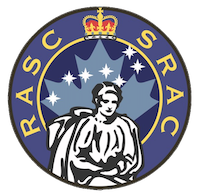Generations of the Proctor family have made great contributions to the popularization of astronomy.
Richard Anthony Proctor (23 March 1837 in Chelsea, London – 12 September 1888) was an English astronomer.
He is best remembered for having produced one of the earliest maps of Mars in 1867 from 27 drawings by the English observer William Rutter Dawes. His map was later superseded by those of Giovanni Schiaparelli and Eugène Antoniadi and his nomenclature was dropped (for instance, his "Kaiser Sea" became Syrtis Major Planum). He used old drawings of Mars dating back to 1666 to try to determine the sidereal day of Mars. His final estimate, in 1873, was 24h 37m 22.713s, reasonably close to the modern value of 24h 37m 22.663s. Nevertheless, Frederik Kaiser's value of 24h 37m 22.622s is closer.
Richard A. Proctor delivered a popular series of astronomy lectures to audiences in Montréal in 1879. He was survived by his second wife, the former Mrs. Robert J. Crawley. A crater on Mars is named after Richard A. Proctor.
At a special meeting on 1891-11-03 to receive a visit from the widow Mrs. Proctor, on motion from Mr. Arthur Harvey, seconded by Mr. G.G. Pursey, Mrs. R.A. Proctor was elected a Corresponding Member of the Astronomical and Physical Society of Toronto. Mrs. Proctor spoke briefly but memorably concerning Lick Observatory. She addressed the Society again for upwards of an hour on "The Lick Observatory and its Work", at the meeting of 1891-11-16. Mrs. Proctor received a hearty vote of thanks for her address and the views, which included some very fine ones of Jupiter, certain nebulae, and portions of the Milky Way. Complimentary remarks were also made by Sir Adam Wilson, Mr. Elvins, and the Chairman.
Mrs. Proctor later remarried, becoming Mrs. L.D. Proctor-Smythe, and moved back to Dublin. Her membership was noted for the last time in 1896.
Surname:
Proctor
Title/Given Name:
Mrs. Richard A.
Nation(s):
USA/Ireland
Start:
1891
End:
1896

